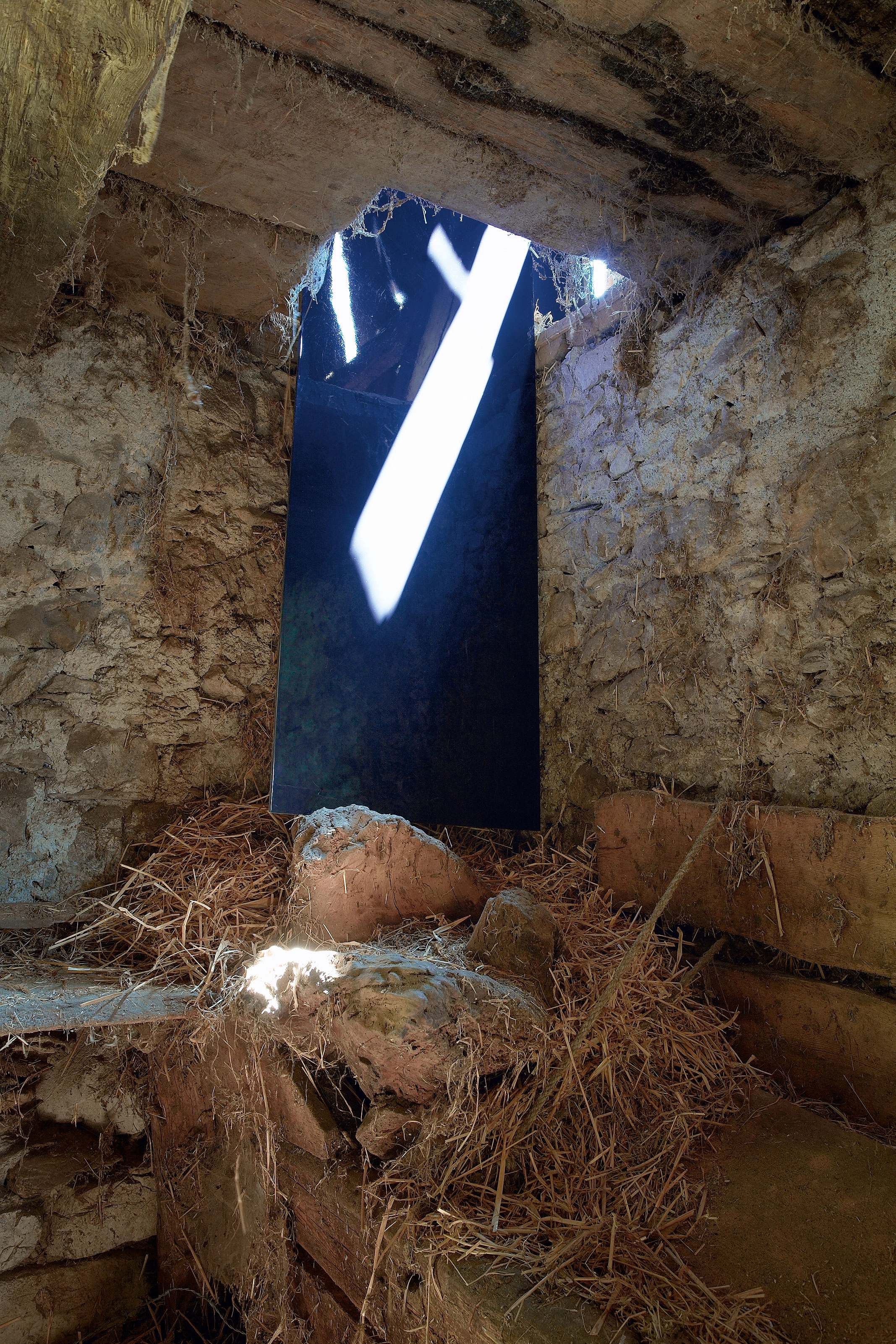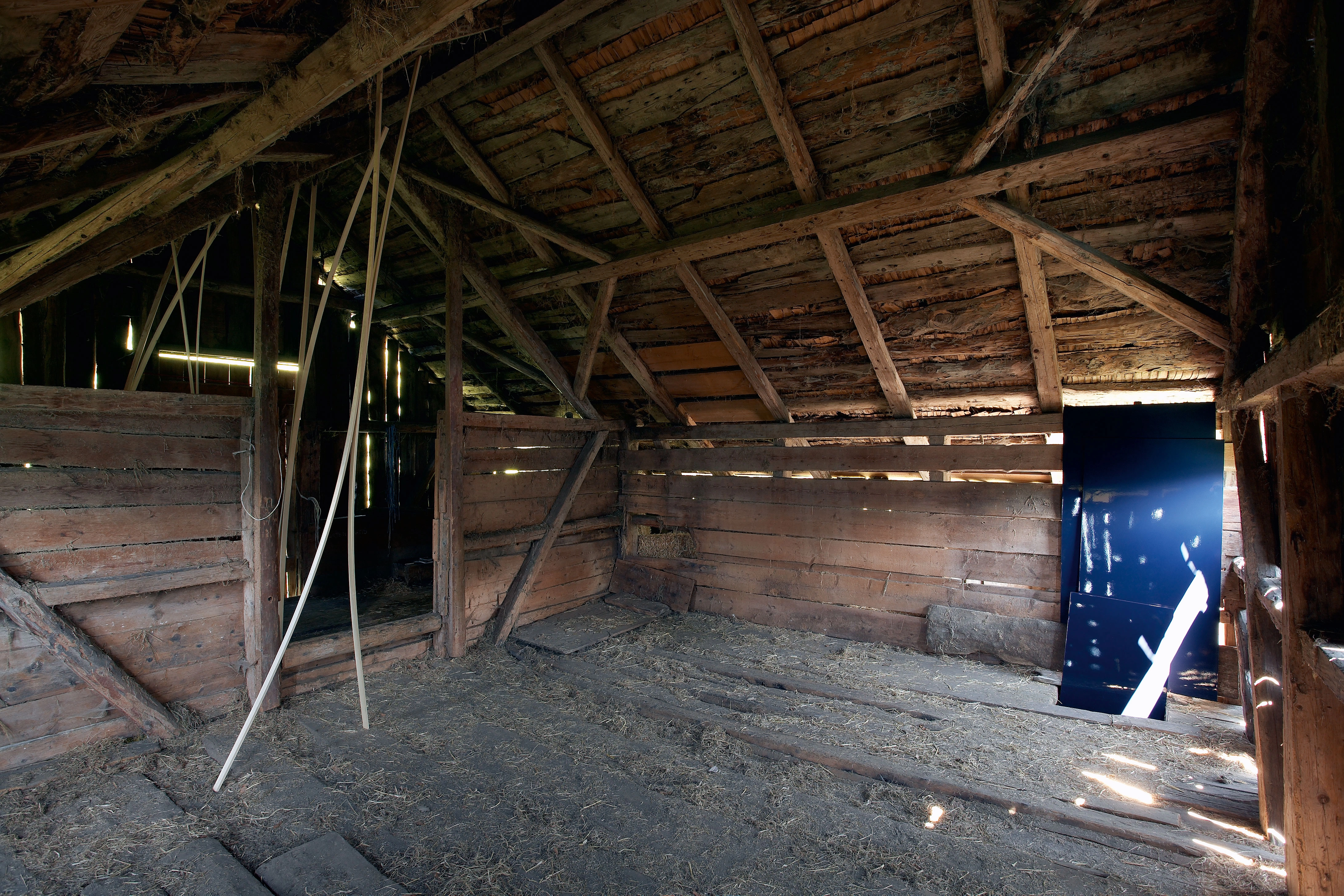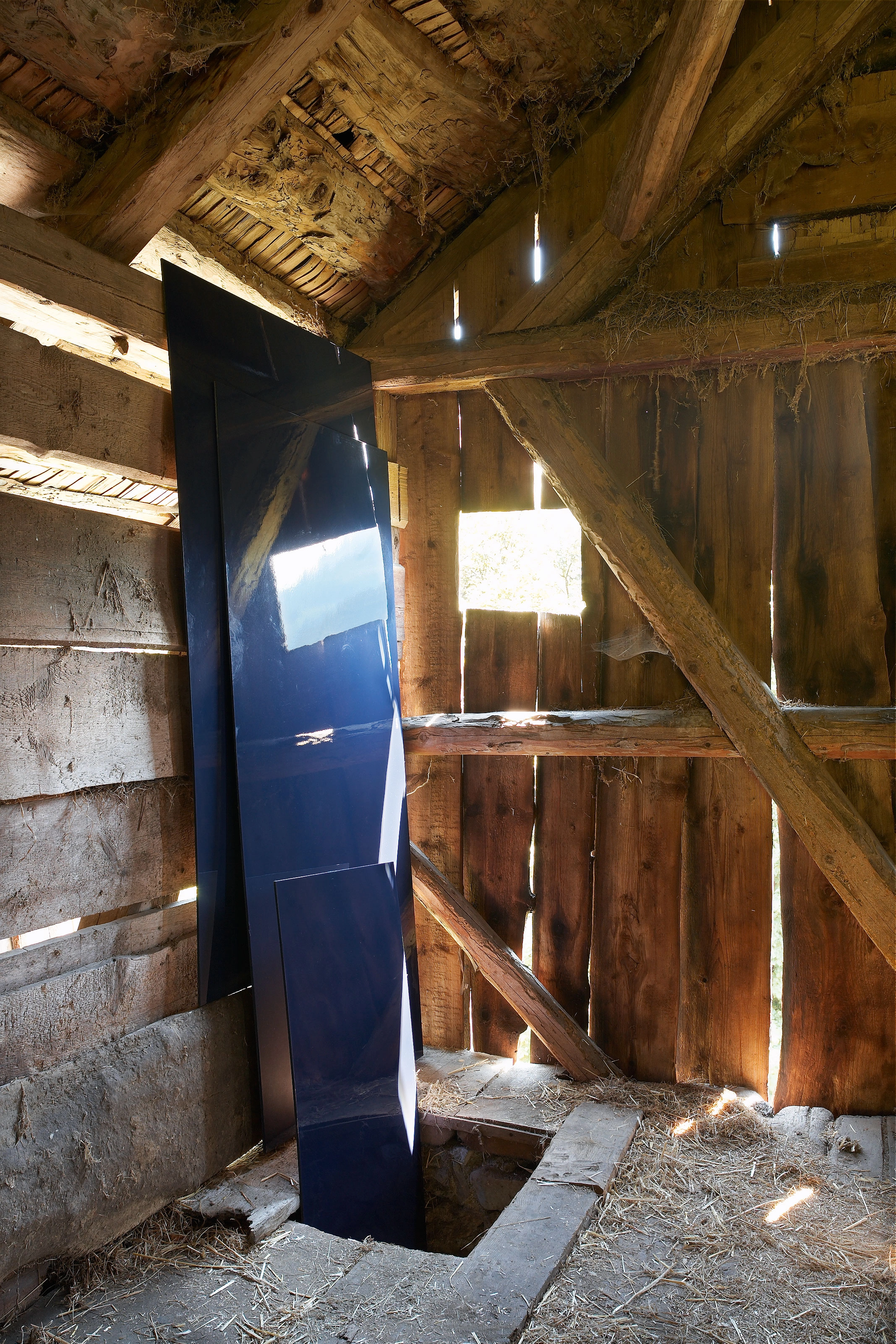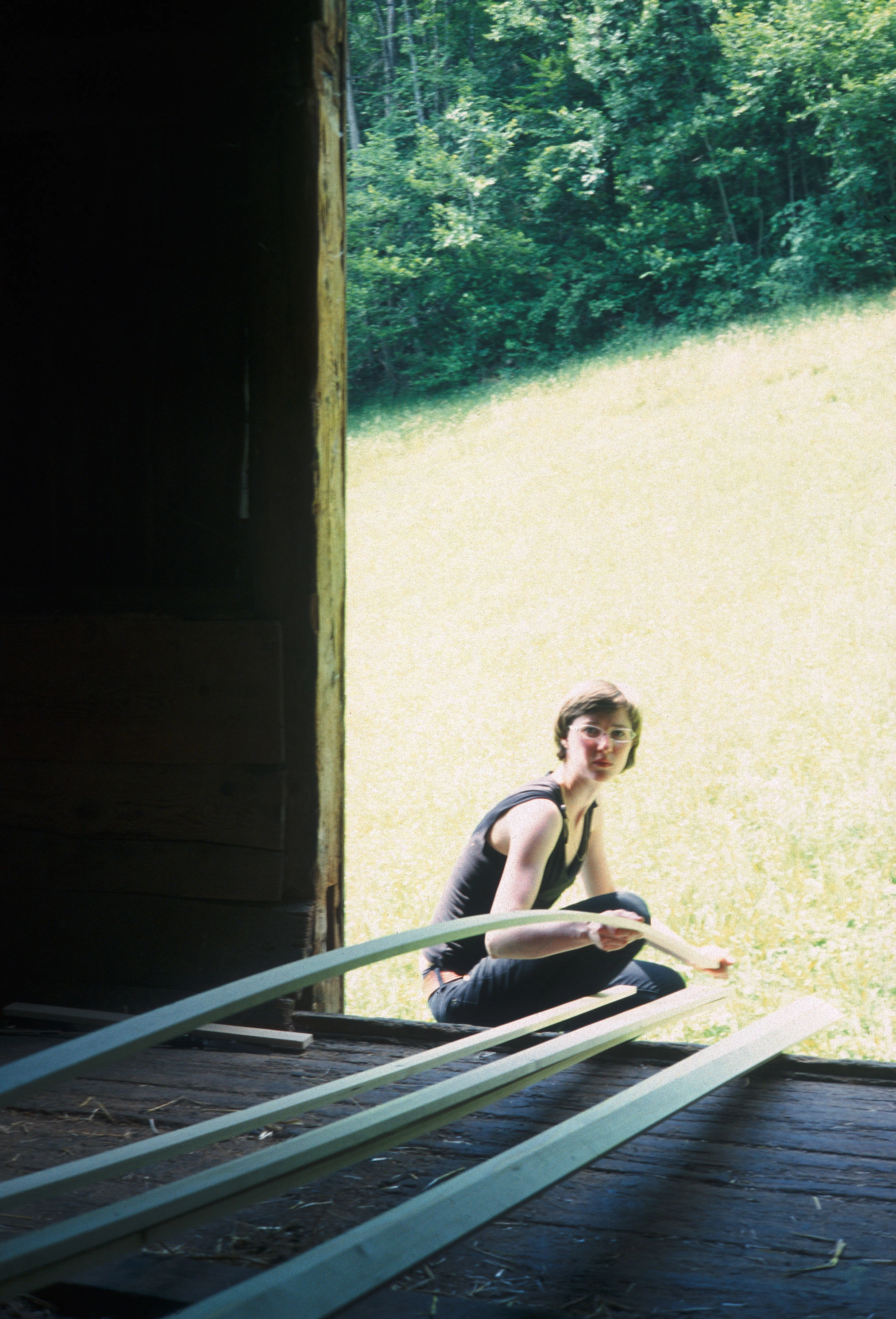Two works by Karin Hueber were on view in Amden. In one of them, the artist took advantage of an existing opening between the two floors of the barn to install three panels of different height, painted a glossy dark purple, so that they rose up into the hayloft one behind the other. Viewers saw different reflections depending on their vantage point and the incident light. The resulting unpredictable phenomena gave them a heightened awareness of both the two connected rooms on the first floor and the world outside.
There was no fixed standpoint, only the experience of the moment. Like her earlier works, the artist’s project for Amden explored the relationship between stability and instability. For her second piece, she had a local sawmill produce long thin strips of pine, sawn so thin that they buckled. She placed ten of these in pairs between the floor and rafters of the wooden building. In her installation, the artist wanted to visualize what she calls the “dormant uncertainty” inscribed in the worn and weathered barn.
Ingo Gerken once described Hueber’s works as “the sculptural, built folds and distortions that carry a place within them, collecting it inside them, and encountering it head on.” What she creates, wrote Gerken, are “hard echoes.”1 Hueber begins by studying the architectural and spatial properties of a room, including the structures and forces that animate a space and its sightlines. Found materials also provide a point of departure for her work. Her installations reveal surprising perspectives, change the scale of a room, upset the balance, multiply spaces, or open them up. Her oeuvre is about repetition and exploring the emotional potential of a situation. The constitutive components of her work are the room itself as well as the light reflected on lacquered panels or on other mirroring elements. In an older work, a mirror is propped between two pieces of wood so that they are perceived as supports without detracting from the nature of the piece as an optical illusion. Hueber’s work typically relates and reacts to space, strengthening and stretching it, and thus strikingly revealing the inner magnitude of its structures. As a rule, the artist’s large-scale, abstract works in space respond to concrete situations and are often seen in conjunction with smaller objects or drawings. They are entities that can rarely be understood, let alone exhibited apart from their situational context. Integrated into their surroundings in multifarious ways, they reinforce specific properties of the space in which they are located. Nonetheless, they cannot be exclusively defined as site-specific for they are undoubtedly autonomous pieces that must be reinstalled each time, existing as a work only in their respective form. This yields the existential quality inherent in the formal rigor of these works, which Karin Hueber herself once described as “parasitic ensembles.”
– Roman Kurzmeyer
- Ingo Gerken, “Karin Hueber,” in Mirjam Varadinis (ed.), Shifting Identities: (Schweizer) Kunst heute, exh. cat. Kunsthaus Zürich, Zürich: JRP Ringier, 2008, p. 129.

 Images
Images
 Info
Info




 Next Exhibition
Next Exhibition